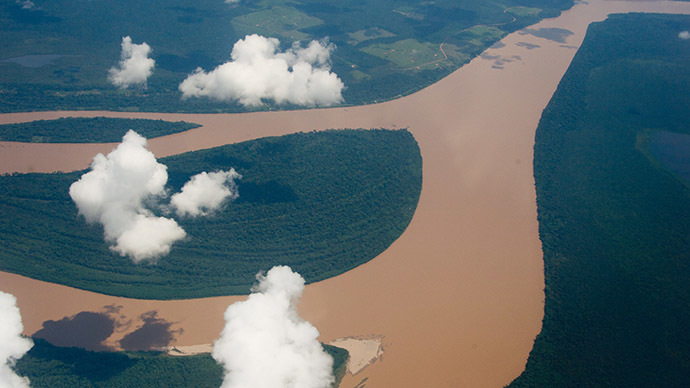6th mass extinction already here as species disappear 100 times faster - study

The world is on the brink of its sixth mass extinction, as animals are disappearing 100 times faster than previously, scientists warned in a new report. They also say humanity could be among the first victims of this extinction.
According to the Princeton, Stanford and UC Berkeley scientists, rates like these have not been seen since the last age of the dinosaurs some 66 million years ago. Paul Ehlrich of Stanford says the data “shows without any significant doubt that we are now entering the sixth great mass extinction event."
The data demonstrates“without any significant doubt that we are now entering the sixth great mass extinction event,” Ehlrich, whose work on the disappearance of species dates back to 1980, said.
The report has been drawn to counter critics who believe the data is exaggerated. Ehlrich and co-authors seek to demonstrate, using conservative assumptions, that the new phase is already well under way, seeing as they are “far above the ‘background’ rates prevailing in the five preceding mass extinctions.”
The background rate is the normal rate of disappearance between mass extinctions.
“If it is allowed to continue, life would take many millions of years to recover, and our species itself would likely disappear early on,” lead author Gerardo Ceballos of the Universidad Autonoma de Mexico said in support.
READ MORE: Earth closer to 'irreversible changes' as humanity crosses 4 of 9 planetary boundaries
But the background rate is difficult to estimate, so the scientists had to improvise with techniques. Humanity has gaps in its knowledge of what happened over Earth’s 4.5 billion-year lifespan.
The team used a past extinction rate that was twice as high as the estimates widely used in previous studies, and compared that rate to the most conservative estimates. In this way, they brought the two approximate rates as close to each other as possible – the current and all-time background rates.
The researchers argue that if the past rate was two mammal extinctions out of 10,000 species over 100 years, then the “average rate of vertebrate species loss over the last century is up to 114 times higher than it would be without human activity, even when relying on the most conservative estimates of species extinction.”

They add that their “calculations very likely underestimate the severity of the extinction crisis because our aim was to place a realistic lower band on humanity’s impact on biodiversity.”
The International Union for Conservation of Nature backs up the alarming news, providing a threat level of 26 percent for mammals and 41 percent for amphibians – Elrich calls those who made it into the statistic “the walking dead.”
“Averting a dramatic decay of biodiversity and the subsequent loss of ecosystem services is still possible through intensified conservation efforts, but that window of opportunity is rapidly closing,” the scientists say.
READ MORE: The Great Dying-2? Manmade CO2 levels could cause repeat of largest mass extinction event
There is a man-made causal chain that leads to biodiversity reduction, habitat loss, deforestation, overexploitation of resources and other evils. As species disappear, so do the key ecosystem services provided by bee pollination, as well as wetlands water purification. The researchers say we stand to lose many of those biodiversity benefits within three generations. As Ehlrich puts it, “We are sawing the limb that we are sitting on.”
The authors hope their study, published in Science Advances, will serve to influence policy and propel conservation efforts forward before the changes become completely irreversible.












